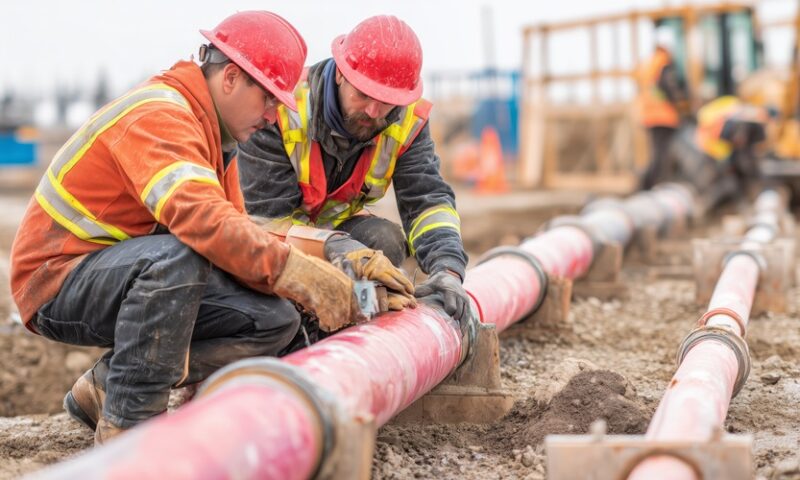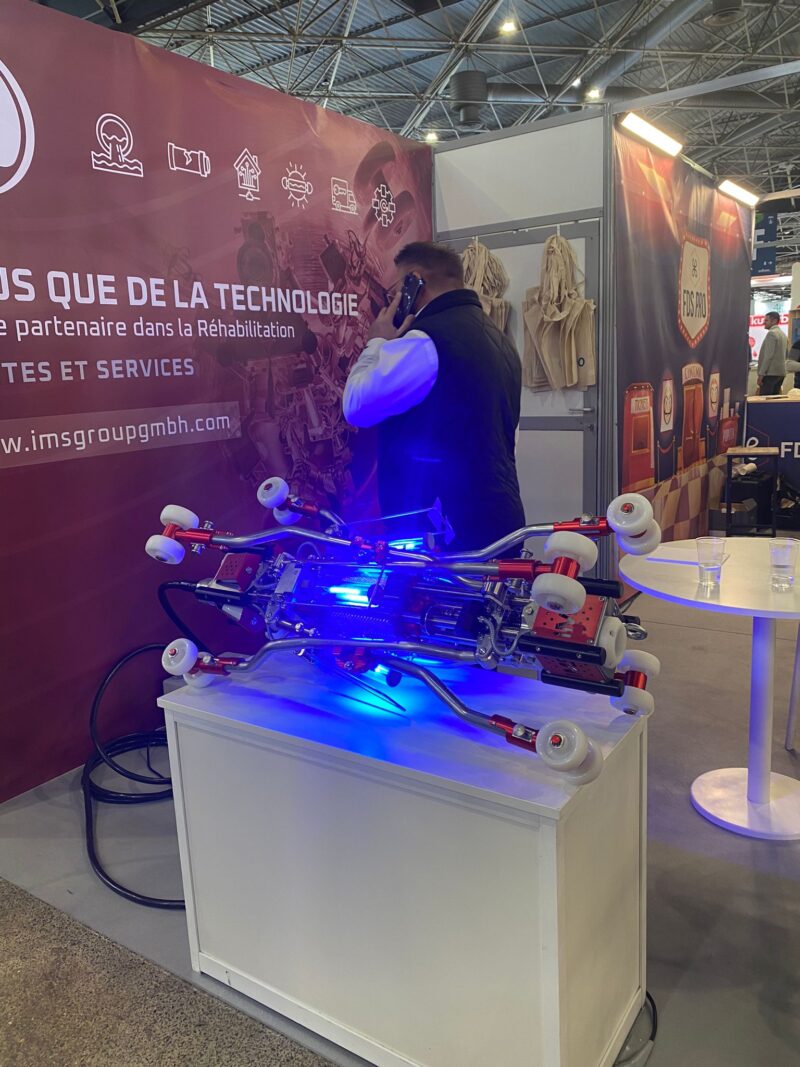When people hear “UV curing” they often think of printing, coatings, adhesives, even nail salons. But ultraviolet (UV) technology goes far beyond surface finishes. Across dozens of industries, UV plays a critical role, from automotive to infrastructure repair. In this post, we’ll explore one of UV’s industrial applications, particularly how UV makes trenchless pipe rehabilitation (UV-CIPP) faster, cleaner, and more effective.
 What Is CIPP? And Why It Matters
What Is CIPP? And Why It Matters
Cured‑In‑Place Pipe (CIPP) is a trenchless method for repairing damaged or ageing pipelines without full excavation.
Here’s how a typical (non‑UV) CIPP process works:
- A flexible liner (often felt, fibreglass, or other resin‑impregnable fabric) is soaked (“impregnated”) with a resin.
- The liner is inserted into the host pipe (via inversion or pulling) and inflated.
- Heat, steam, or ambient conditions cure the resin in situ, binding the liner to the existing pipe walls.
- The result: a new “pipe within the pipe,” seamless and structurally sound.
CIPP appeals because it reduces disruption, avoids full-length trenching, and can restore hydraulics and structural integrity more cost-effectively than dig-and-replace.
Ref: https://www.trinitysubsurface.com/blog-article/the-advantages-of-uv-cured-in-place-pipe-lining?
However, traditional curing (steam, hot water, ambient) has limitations: it can be slow, dependent on environmental conditions, harder to control, and sometimes risky in confined underground environments.
This is where UV steps into a starring role.
UV‑Cured CIPP: How It Works & Why It’s Disruptive
In UV‑cured CIPP, the same liner/resin concept applies but curing is triggered by ultraviolet light rather than heat or chemical catalysts. The advantages are compelling.
 How the process typically works:
How the process typically works:
- A factory‑impregnated liner (fibreglass fabric impregnated with a UV‑curable resin) is manufactured and shipped to site.
- The liner is inserted into the damaged pipe, often aided by a glide foil to reduce friction.
- Once in position, a UV light train (or continuous UV light source) is passed through the liner, curing the resin as it advances.
- The curing is fast and controlled; once fully cured, the liner forms a rigid, structural new “pipe” bonded to the host.
Major advantages of UV‑cured CIPP:
- Speed: Some installations report curing rates of up to 2 m per minute.
- Reduced risk and simpler logistics: No need for on‑site mixing of resin, less heavy equipment (steam generators or boilers) and fewer chemical hazards.
- Greater precision & consistency: Because UV exposure is controllable and uniform, the cure quality is more predictable and uniform.
- Long life and durability: UV-cured liners can be highly robust, potentially lasting 50+ years, sometimes claimed to 75–100 years.
- Environmental benefits: Because UV curing avoids steam, hot water or consumable fuels, there is less energy consumption, fewer emissions, and minimal risk of off-gassing during cure.
- Smaller job footprint & less disruption: More compact equipment, less road closure, and faster return to service.
Ref: https://www.scanprobe.com/cctv-drain-camera/uv-cured-cipp-benefits-of-the-uv-lining-technology/?
https://www.precisiontrenchless.com/our-services/ultra-violet-cured-in-place-pipe-lining/?
Some operators find they can rehabilitate multiple pipes per day, reducing downtime and cost.
https://sewerpros.com/uv-cured-cipp-lining/?
Because UV cure is less influenced by external temperature or groundwater, the approach is more robust in varying conditions
In summary: UV lets you scale the benefits of trenchless repair. Faster, lower disruption, greater quality control in tougher, more demanding environments.
Considerations
Of course, no technology is perfect. Some factors to consider:
- The host pipe must be cleaned/prepared thoroughly. Debris, protrusions or misalignment can compromise the liner.
- Sharp bends or transitions in pipe may challenge UV light penetration or cause shadowing.
https://www.pipedetect.com/knowledge-about-cippuv-technology.html?
- Quality assurance is critical. Real-time monitoring during UV cure is often used to verify proper polymerisation.
Still, for many large‑scale or sensitive infrastructure environments, UV CIPP is emerging as a go-to solution.
The Big Picture: Why UV Matters in Industry
- Precision + speed: UV gives control over when and where a reaction occurs with minimal lag or thermal stress.
- Reduced footprint: Many UV systems are compact, avoiding large thermal or mechanical infrastructure.
- Reduced energy & emissions: Because curing or reactions happen with light rather than heat, energy demands and emissions are often lower.
- Adaptability: UV is wavelength-flexible and can be engineered to suit resin chemistries, surface conditions, or material constraints.
- Multipurpose: From disinfection to structure, coatings to sensors, UV is rarely a one-trick pony.
In the case of CIPP repair, UV allows infrastructure operators to rehabilitate buried assets faster, cleaner, and with greater predictability. As urban infrastructure ages and environmental resilience matters more, the role of UV in “smart repair” will only continue to grow.
If you’d like to dive deeper into other UV‑cured applications, you’ll find more information in this section of the website.
Latest Articles
Avoid Holiday Disruption: Key Order Deadlines for Year End Delivery
As we approach the end of the year, production schedules get tighter and distribution channels come ...
View ArticleAll UV Lamps. One Standard: How Alpha-Cure Scaled UK Excellence Globally
When Alpha-Cure expanded our manufacturing footprint to China, it wasn’t about lowering costs, it ...
View ArticleIndustry Focus – Helping Open New Markets for UV Technology
A guide to support local distributor growth At Alpha-Cure, we’re proud of the strong presence ...
View ArticleLonger Lead Times? Slower Responses? Here’s How Alpha-Cure Keeps You Running
As the year enters it’s final quarter, pressures can ramp up. Production targets, procurement ...
View Article